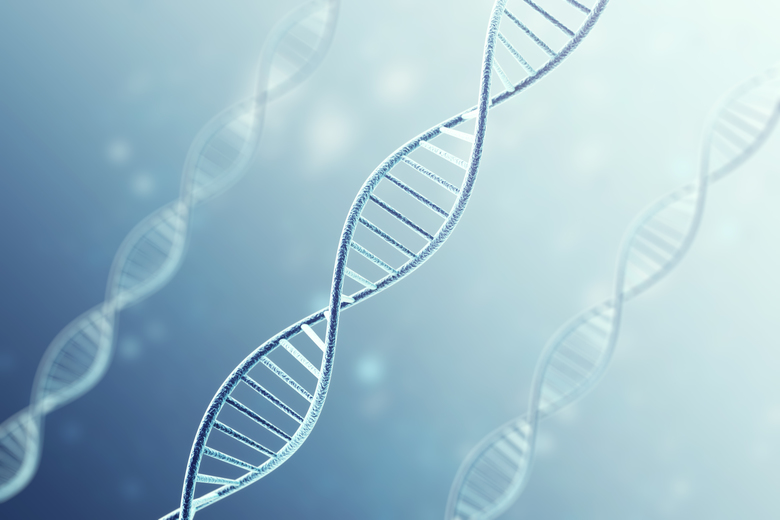How much nature and nurture are responsible for criminality is a classic question in the field of criminology. Do biological factors hold more liability in inducing criminal behavior than environmental conditions, or vice versa?
Much biological, psychological and sociological research has been done to explore the answer to this question. Some studies enforce the significance of nurture over nature. For instance, the brainwashing of children in politico-religious institutes. Other cases point the finger to nature, like genetically transmitted diseases that cause disorder in individual development. However, recent findings claim that hereditary and environmental processes are co-dependent factors that affect individual conduct.
Behavior is learned from one’s social environment, but genes and biological processes “underlie how learning occurs” (Fox, 2017). Criminal behavior is not simply due to nature or nurture, but involves a complex interplay of both.
Crime is defined as “an intentional act in violation of the criminal law” (Brown et al., 2010). Crime is a relative phenomenon. People and societies may differ in their interpretation of it. Moreover, some acts are socially or legally wrong, called mala prohibita. While others are intrinsically or morally wrong, termed mala in se.
The article analyzes the interplay of nature and nurture in influencing individuals to commit norm-violating acts, whether legally or morally wrong.
A Brief Account of Nature and Nurture in Criminology
In the late 19th and early 20th century, criminological studies were more inclined towards nature, the biological explanation of criminality, rather than nurture, the environmental justification of crimes (Brown et al., 2010). For example, Cesare Lombroso, an Italian criminologist, gave greater significance to defects in the genetic structure of individuals to explain their non-conventional behavior (Erzurumluoglu, 1993).
The school of thought that perpetuated nature behind crime gained popularity, perhaps, because of Charles Darwin’s theory of natural selection and evolution. Darwin’s evolution allegedly took place solely on biological factors.
Around the same time, sociological theories came on the fore that targeted societal structures instead of “individual pathologies” to elucidate the causes of crime. Karl Marx, Emile Durkheim and Max Weber played a huge role in unfolding the societal arrangements, which influenced and shaped individual behavior.
The emergence of sociological criminology pushed the focus from nature to nurture in the mid 20th century (Coyne & Wright, 2013). For example, Edward Sutherland, an influential American criminologist, associated environmental conditions with criminal behavior through his differential association theory. According to him, criminal behavior is learned through social interactions, as opposed to being determined by physiological details (Bernard, 2020).
In the second half of the 20th century, numerous research and experiments found biological significance behind observed behavior, without disregarding the role of the environment.
Today, evidence demonstrates an interplay of biological and environmental factors that influences individuals to criminal activities. They impress a collective influence on behavior, gradually thinning the line, and hence reducing the conflict, between nature and nurture. It is no longer a debate, according to many criminologists, to prove the innocence of one or the other and blame its counterpart for the criminal behavior of individuals (Fox, 2017; D’Onofrio, 2008; Brown et al., 2010).
Environmental Influence on Norm-Violation
There is ample evidence to suggest the significant impact of the environment on behavior. Many psychologists have argued that early life experiences can influence the future attitudes, intentions and personalities of individuals (Krueger, 1993; Giddens, 2009).
Jean Piaget’s theory of cognitive development, for example, describes the implications (and importance) of nurturing conditions of children, which can leave lifetime impressions on their minds (Giddens, 2009).

Moreover, many sociologists and criminologists have advanced the significance of the effects of social forces on behavior in general, and antisocial behavior in particular. Marx and Durkheim, for example, gave macro explanations to the existence of crime, by claiming it to be an upshot of underlying societal structures.
Strain theory and crime
Robert K. Merton’s strain theory, building on Durkheim’s work, posits that the stress or strain put on individuals by the societal structure is a cause of “norm violation” (Brown et al., 2010). When a society defines or institutionalizes certain goals and desires within the societal structure, it may induce norm-violating behavior in individuals to actualize those aspirations. Also, it may produce frustration in those who fail to realize them, thereby tempting norm-violation in them.
Recent studies also show a relationship between negative mental stress and violent behavior (Paquet, 2020). Dr. Jill Portnoy, an assistant professional at the University of Massachusetts Lowell, postulates that “a stressful environment may cause physiological changes”, which in turn may induce aggressive or impulsive behavior (Webster, 2018).
To elucidate his Strain Theory, Merton talks about American society in particular. According to him, the American Dream is a “double-edged sword”. It espouses and encourages the values of crass materialism due to its over-emphasis on the “almighty dollar” and “attainment of wealth”. Whereas the means of attaining wealth are hardly emphasized.
Steven Messner and Richard Rosenfeld, building on Merton’s work, also ascribe the American Dream as “the root cause of… (their) high volume of crime” (Brown et al., 2010).
‘Nature’ in sociological theories
There are inherent assumptions of nature in various sociological theories. For example, symbolic interactionism, a micro-level sociological perspective, argues about the “self-awareness” that takes place on account of the interaction between the individual and environment.
Herbert Mead, a pioneer of symbolic interactionism, distinguishes between “I” and “Me” to expound this school of thought. For him, “Me” represents an image of the individual that the society formulates and presents to the individual. The individual interprets and builds on his or her societal image. The ability of the individual to absorb the society’s image of him or herself, however, depends on the intrinsic essence of the individual, which constitutes the “I” of Mead’s argument. “I” symbolizes the directive force behind the person, having a “biological foundation” (Knutsson, 1977).
Labeling theory in criminology, building on symbolic interactionism, proposes that all individuals naturally exhibit, or have the tendency to exhibit, some sort of deviant behavior. Deviance, then, is naturally ingrained in every individual. However, labeling – the process of associating or accusing norm-violating qualities to an individual – boosts the intrinsic tendency of deviancy in the individual, until the individual becomes that which he or she has been labeled by the society (Knutsson, 1977).
The aforesaid theory implicitly carries and assumes nature and nurture aspects of criminal behavior.
Biological Factors and Gene-Environment Interactions
The biological make-up of an individual, or genotype, describes the genetic code of a person and determines his or her “hereditary potentials and limitations”. This genetic information plays a part in constituting the “actual appearance and behavior” or phenotype of the person (Britannica, 2016).

Genes do not directly cause an individual’s thought-processes and behavior-patterns, but they do play a role in influencing it. Physiological factors provide the framework of potential traits and tendencies, which influences individuals to “respond to their environment in one way and not another” (Fox, 2017).
To understand the genetic influence on behavior, it is necessary to add environmental factors to the formula. The study of gene-environment interaction constitutes the field of behavior genetics. Let us look at the example of brain plasticity to understand the interaction between genes and the environment.
Neuroplasticity and behavior
Neuroplasticity describes the mind’s ability to respond to new experiences. Information or experiences that the mind is exposed to is reflected in the form of synaptic or biochemical changes in the brain. That is, experience physically alters the human brain. Synapses, which are gaps among neurons, are “highly responsive, dynamic and active” participants in the process of the brain responding to the changing environment (O’Shea, 2005). Human behavior, along with the brain’s bio-chemical structure, adapts or self-organizes continuously to one’s latest experiences.
But what determines the degree of biochemical change that happens every time an individual is exposed to reality? To pose the question from a different angle, why do individuals react differently to seemingly identical experiences? Interestingly, the ability to learn from experience, or “to benefit from nurture”, depends on the way one’s genes “are designed to respond to experience” (O’Shea, 2005). The plasticity of brain advances an interplay of nature and nurture in the formation of human personality.
‘Nurture’ in the biological argument
Biological factors can influence criminality, on account of the interaction of certain genetic components with specific environmental situations. Genes do not determine criminal acts, but they can produce a tendency or inclination towards anti-social behavior.
For example, testosterone (which is more abundantly present in males than in females) is among the biological factors that trigger aggression. Statically, men are reported to commit more crime than women (Fox, 2017). This, however, does not explain the gender gap in criminality in its entirety. There must be other psychosocial factors as well.
Since people have variate genetic architectures, their responses to environmental conditions may be different. Those naturally more inclined to anti-social behavior because of their genetic codes (like excessive aggression or sexual sensation-seeking) are not necessarily bound to end up as norm-violators. They are simply more at risk than others.
But genes or hormones mostly do not express themselves unless interacted with the environment. The social factor, in this sense, becomes an important parameter or stimuli which can either suppress or spark inherent criminal tendency. Perhaps this is why Paul Billings, a clinical geneticist himself, said: “It’s not the genes that cause violence in our society. It’s our social system” (Brown et al., 2010).

Education, guidance, and biological and spiritual/moral nourishment are worthwhile developmental tools to influence or limit gene expression that might otherwise result in diseases, disorders, and ‘anomalies’ in behavior (Aydin, 2013).
Conclusion – Integrating Nature and Nurture
Even though there is a lot to learn and discover, it is evident that nature and nurture work together, throughout the lifespan of an individual, to influence his or her behavior. According to research in multiple disciplines, physiological and social factors are not separate entities or forces, acting behind the individual in a constant brawl with each other. Instead, they are integrated or co-dependent factors that influence human behavior.
The aim is to understand criminality not only for the sake of unfolding the factors associated with nature and nurture. But also to address crime in general and criminals in particular – to bring reform, peace, and order in society as a whole.
In the next article, we discuss criminal accountability in the context of nature and nurture. More specifically, we address the question: if biological and environmental factors influence behavior, can the individual be blamed for his or her actions?
References
Aydin, C. (2013). Are genes the source of behavioral disorders? The Fountain Magazine.
Bernard, J. T. (2020). Edwin Sutherland. Encyclopædia Britannica.
Britannica. (2016). Genotype. Encyclopædia Britannica.
Brown, E. S., Esbensen, F., & Geis, G. (2010). Criminology: Explaining crime and its context (7th ed.). New Jersey: Anderson Publishing.
Coyne, M., & Wright, P. J. (2013). Nature versus nurture. obo in Criminology.
D’Onofrio, B. (2008). Nature vs. nurture. Encyclopedia of Infant and Early Childhood Development, 395-405.
Erzurumluoglu, B. (1993). Crime in the west. The Fountain Magazine.
Fox, B. (2017). It’s nature and nurture: Integrating biology and genetics into the Social Learning Theory of criminal behavior. Journal of Criminal Justice, 49, 22-31.
Giddens, A. (2009). The life-course: Culture, society and child socialization. In W. S. Philip, & A. Giddens (Ed.), Sociology (6th ed., pp. 284-290). Cambridge: Polity Press.
Knutsson, J. (1977). Labeling theory: A critical examination. Stockholm: Scientific Reference Group.
Krueger, N. (1993). Growing up “entrepreneurial”? Cognitive developmental consequences of early exposure to entrepreneurship. Academy of Management Proceedings (ResearchGate), 80-84.
O’Shea, M. (2005). The brain: A very short introduction. Oxford: Oxford University Press.
Paquet, S. (2020). Trying to understand the reasons behind violence. The Fountain Magazine.
Webster, K. (2018). Nature or nurture? Professor says both contribute to crime. University of Massachusetts Lowell.







2 thoughts on “The Interplay of Nature and Nurture on Criminal Behaviour”
Pingback: Criminal Accountability: Who to Blame – Nature or Nurture? - Effective Thoughts
Pingback: The Corporate Underworld: White-Collar Criminality in Markets, Politics and Transnational Economic Order - Effective Thoughts